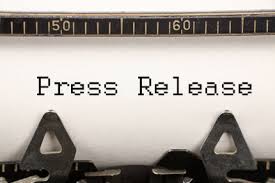How to Write a Press Release
Have you ever wondered how to write a press release? I find them to be a great way to share information about an event, a book, or announcement to gain media interviews to further spread the word. (Some describe a news release as different from a press release. Most press releases are written by professionals, which are then distributed to media. A news release can be posted online where anyone can read it). Here are some tips for writing a release.
Think about your topic, and what you’re announcing. What are the first words you use to describe it if you are telling a friend? What’s newsworthy about it? Does your topic tie into a national trend? Is there a story or situation in the news that your book helps address? Why will a reporter pick up the phone and call you? Make it interesting, but don’t fill it with fluff.
The date and contact information are easily accessible at the top of the page. Follow that with a title and subtitle, and then the body of the release. Answer the questions of who, what, where, when, why, and how in your release.
Choose an angle that is relevant to your audience. Why will they care?
Include a quote from you (as the author) in the release talking about why you wrote the book, what event you’re announcing, or the benefit readers will gain from it. It also helps to have a third party comment reiterating the benefit.
Make it conversational. Don’t use industry lingo that no one outside your business would understand. Keep it straightforward, and use the active writing voice with strong verbs. Don’t bore your readers.
Keywords can be used in your release, so that when people are searching online for your event or book, it will show up through Google, Bing or Yahoo search engines. You can also use keywords to connect to your website as a hyperlink.
The last paragraph of the body of the press release can include contact information for the event, interviews, book readings, or book signings.
At the end, it’s often a good idea to include a paragraph about you, your organization or book repeated on all of your collateral materials that tells a little more about you and your credentials – a boilerplate paragraph. Think of it as a ‘mini-bio.’
Finally, proofread, proofread, and proofread. You want your press release to be free of errors. You may not have control of your release after it’s posted online or shared through social media, but you can make sure it’s presented in the most professional way possible.





